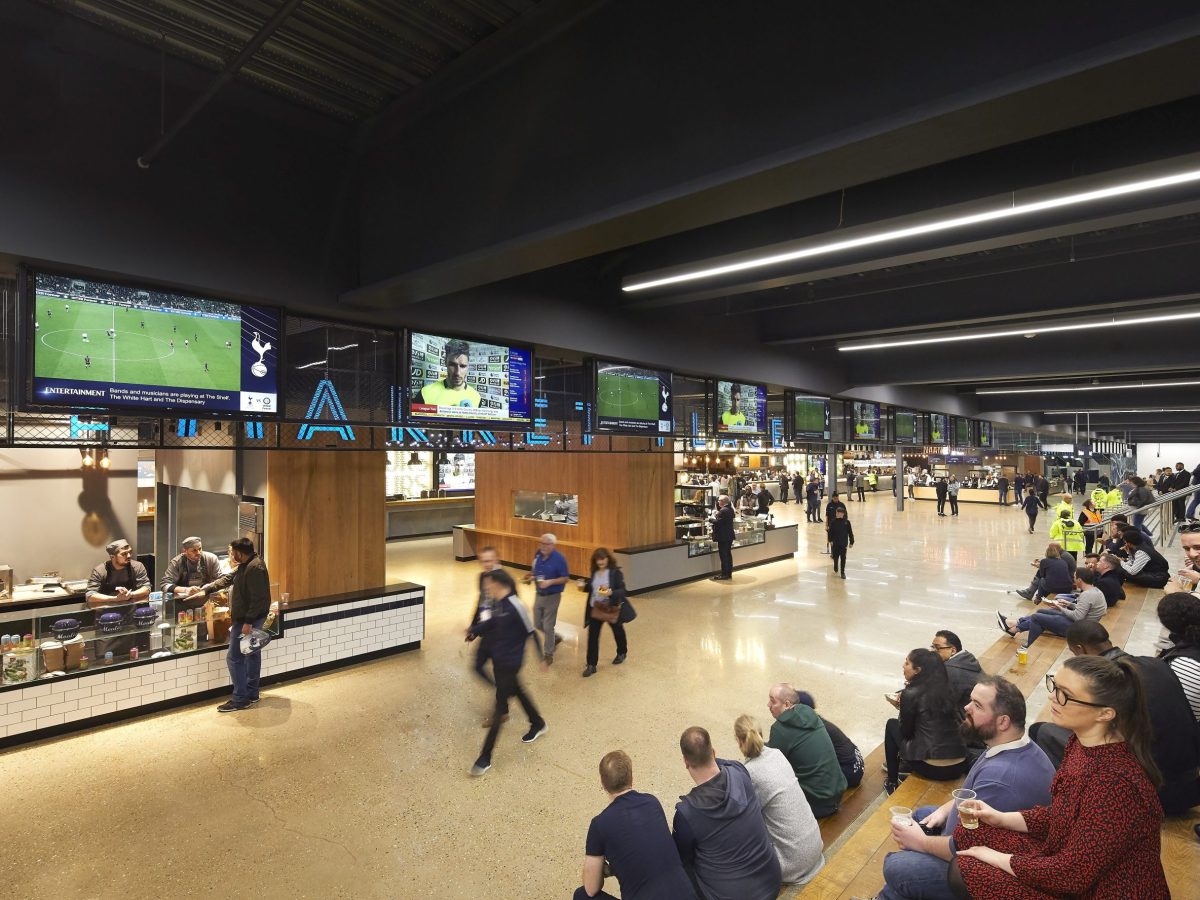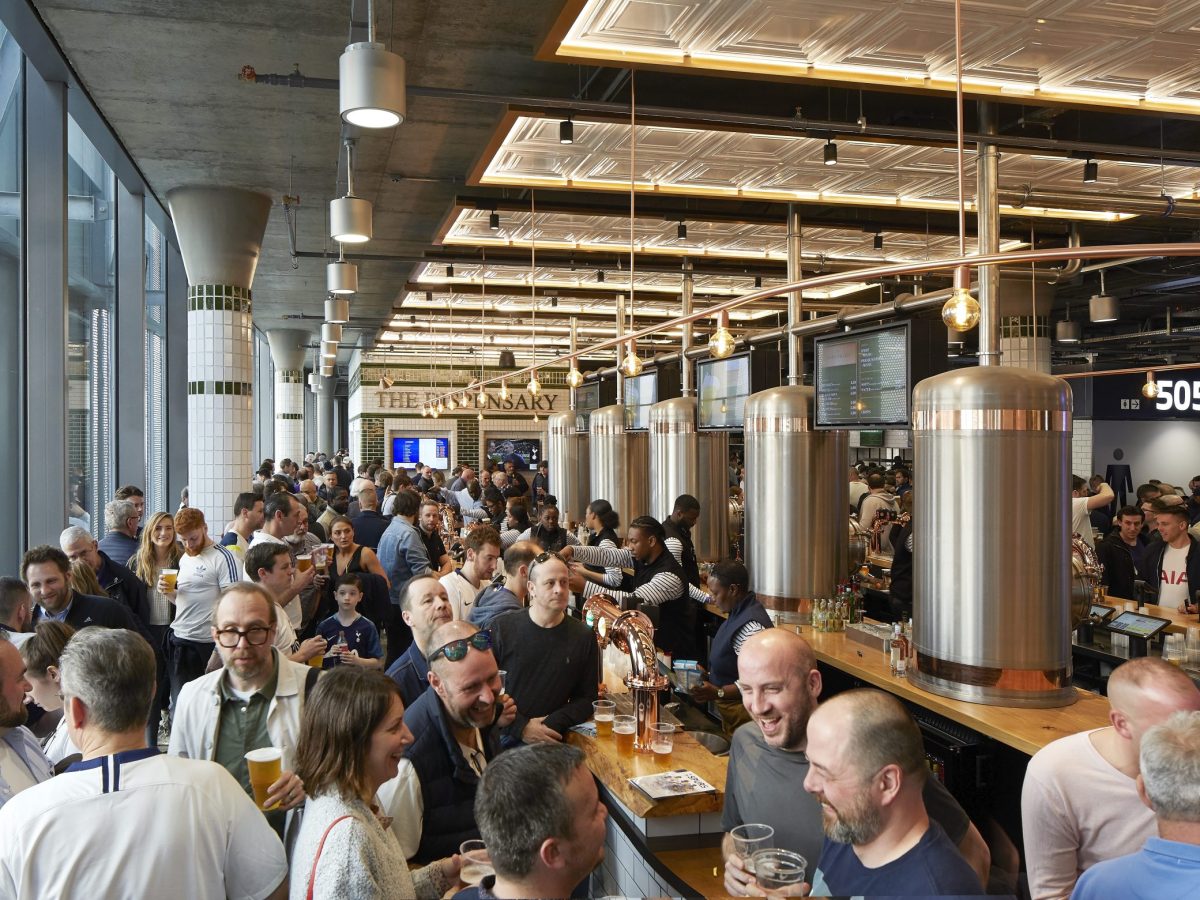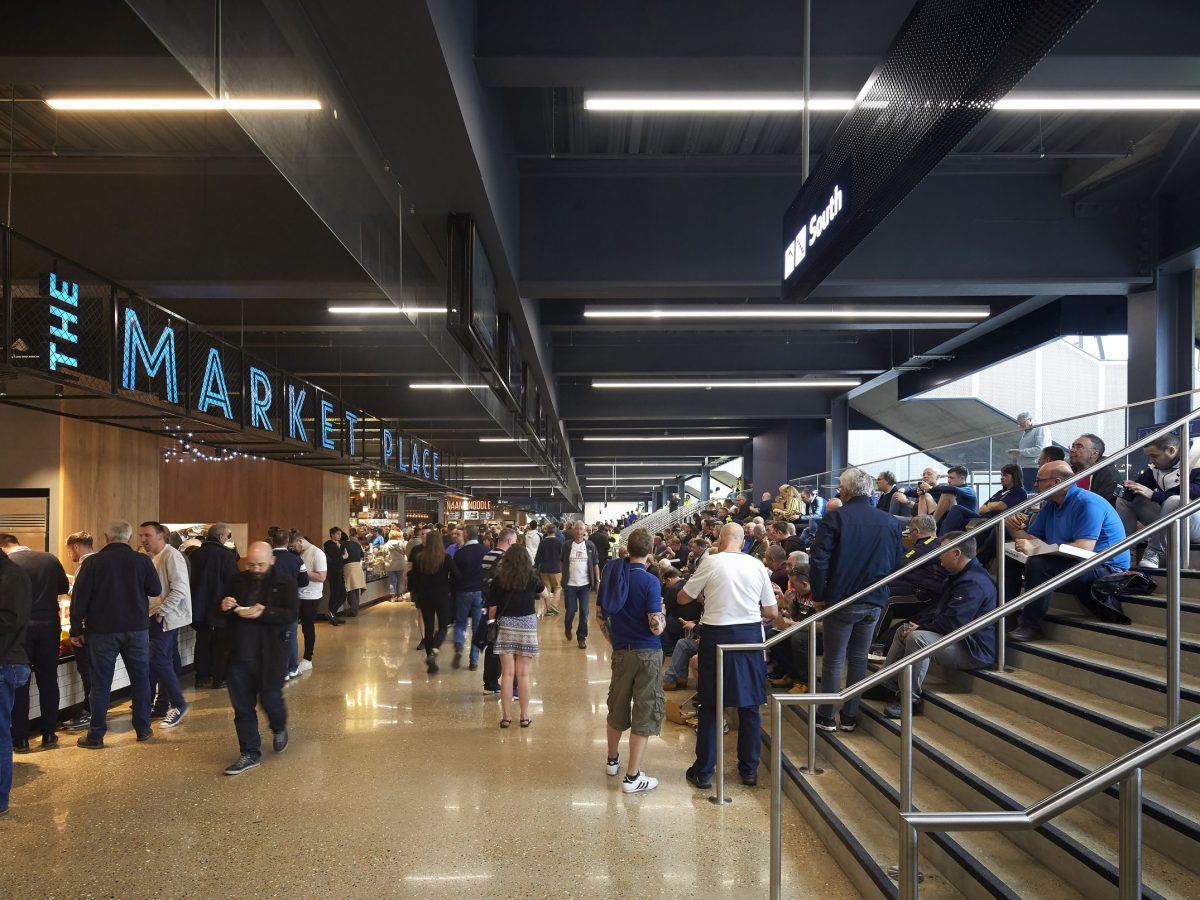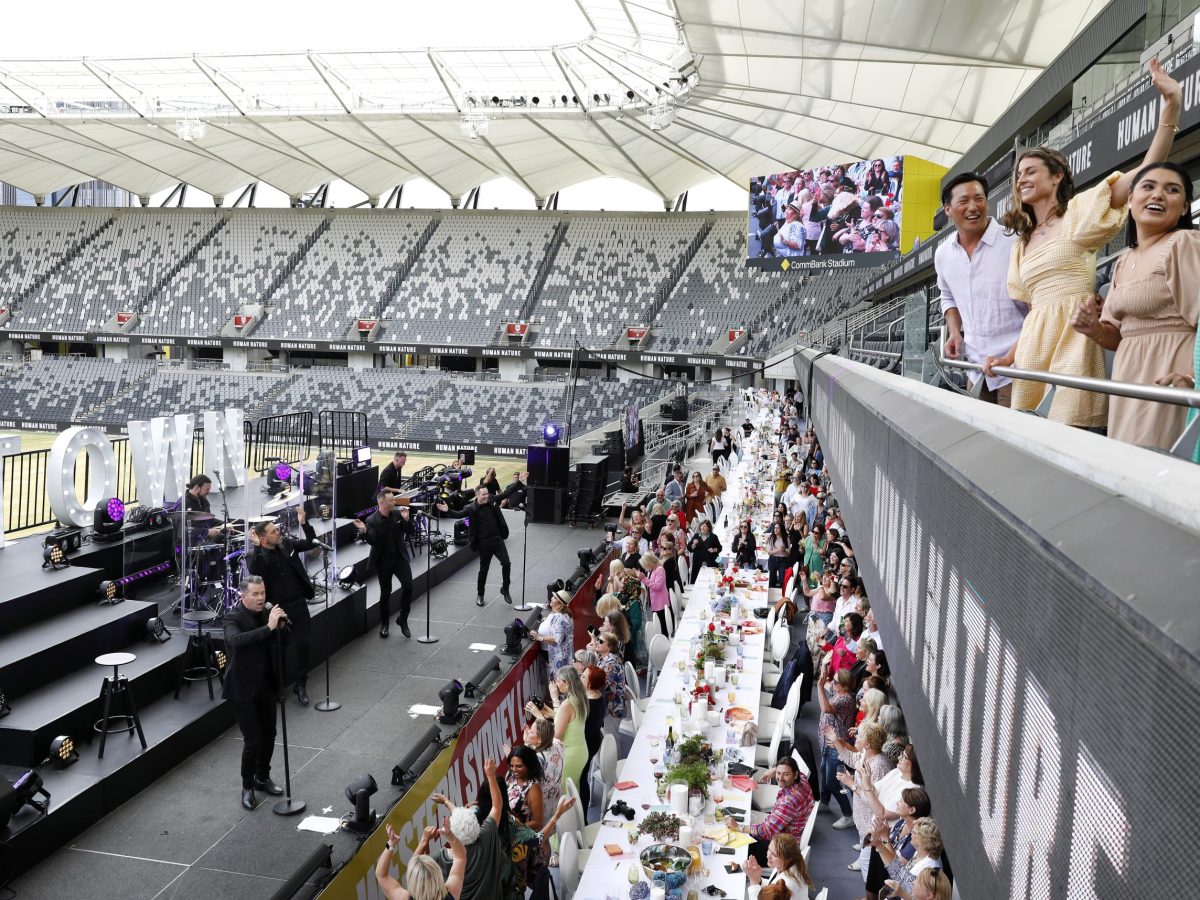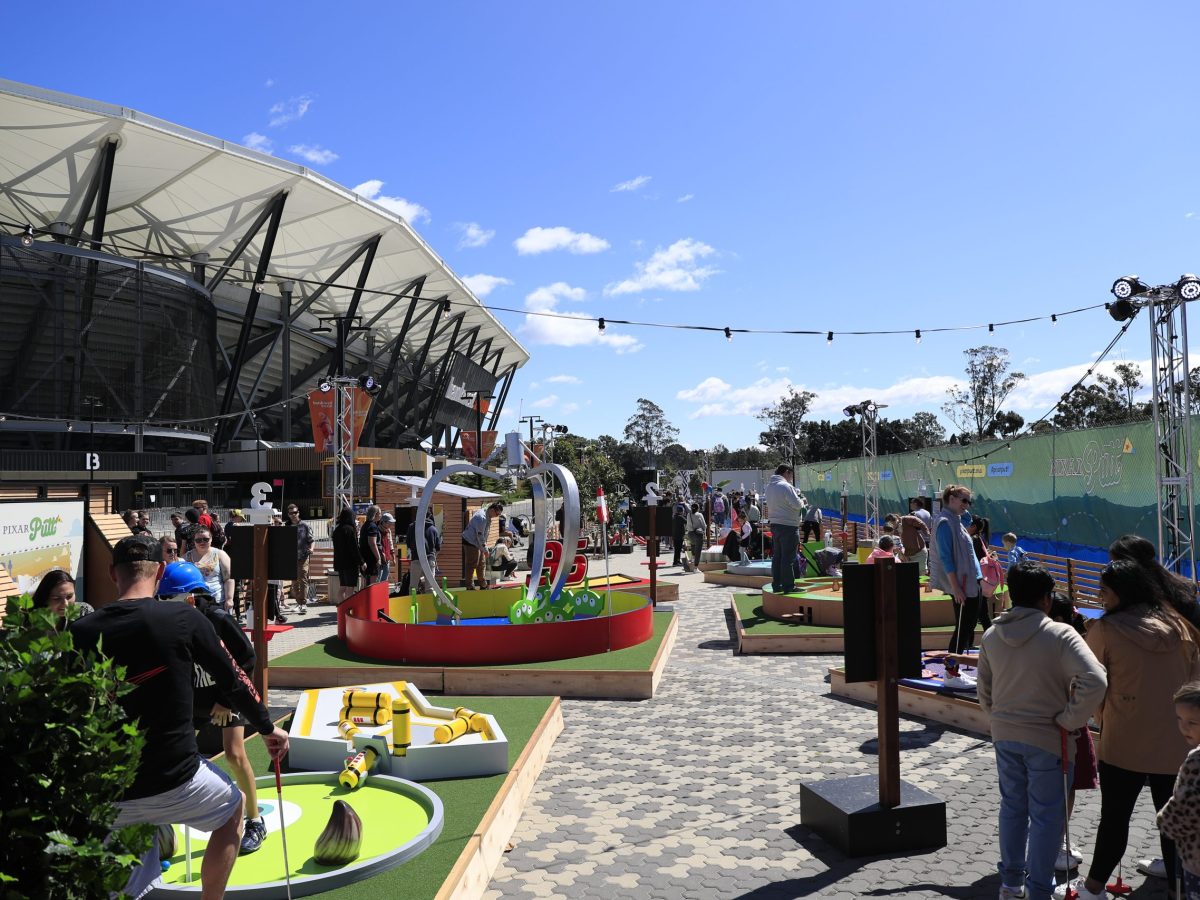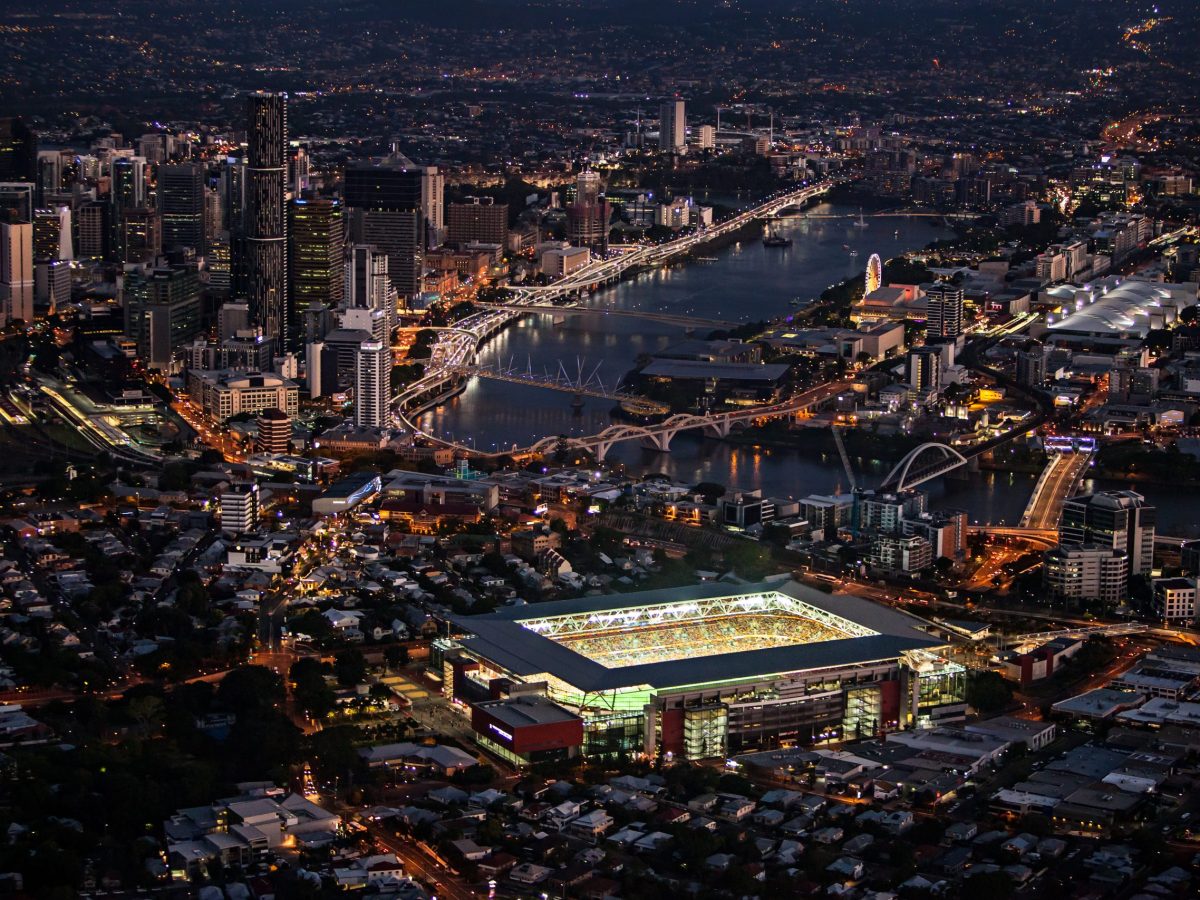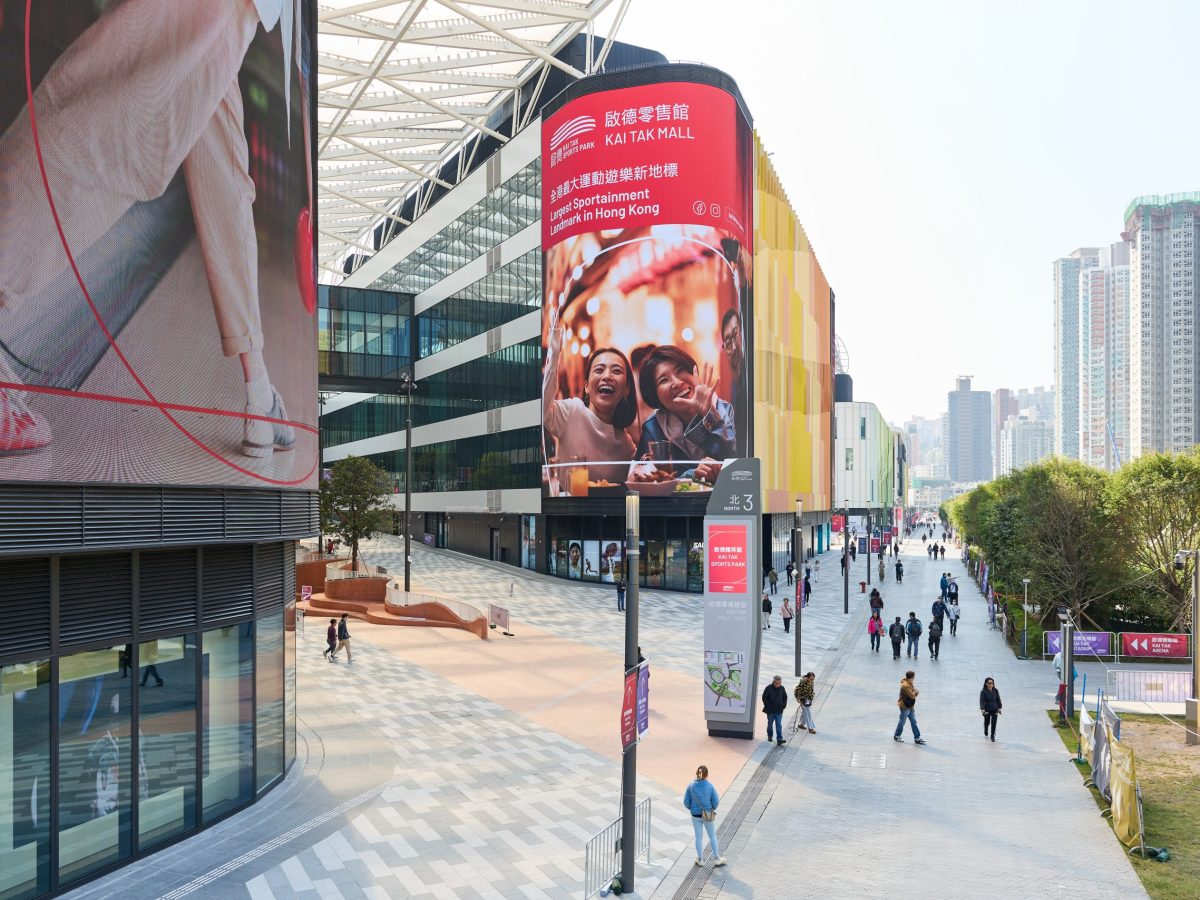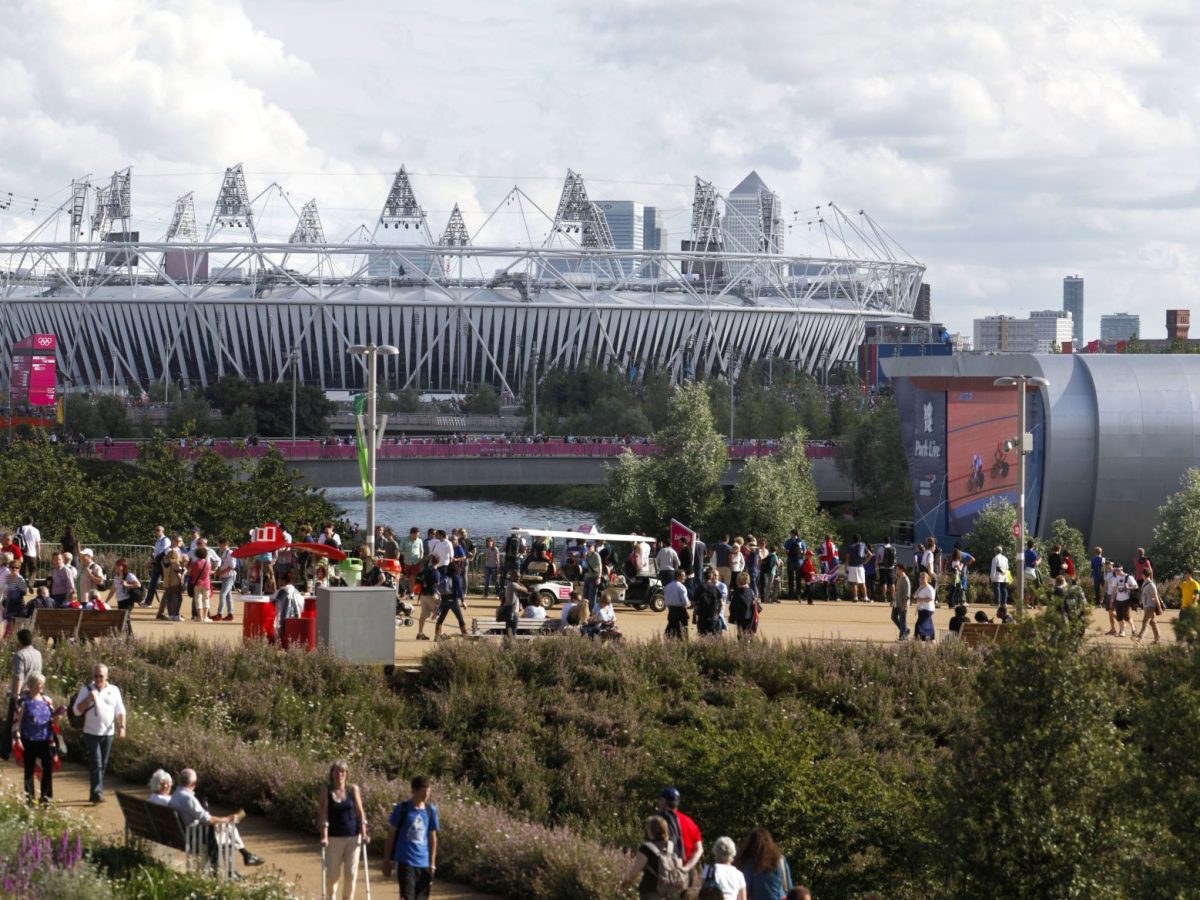February 13, 2025
The stadium bowl is the glue pot that creates sticky 24/7 precincts in the heat of live entertainment
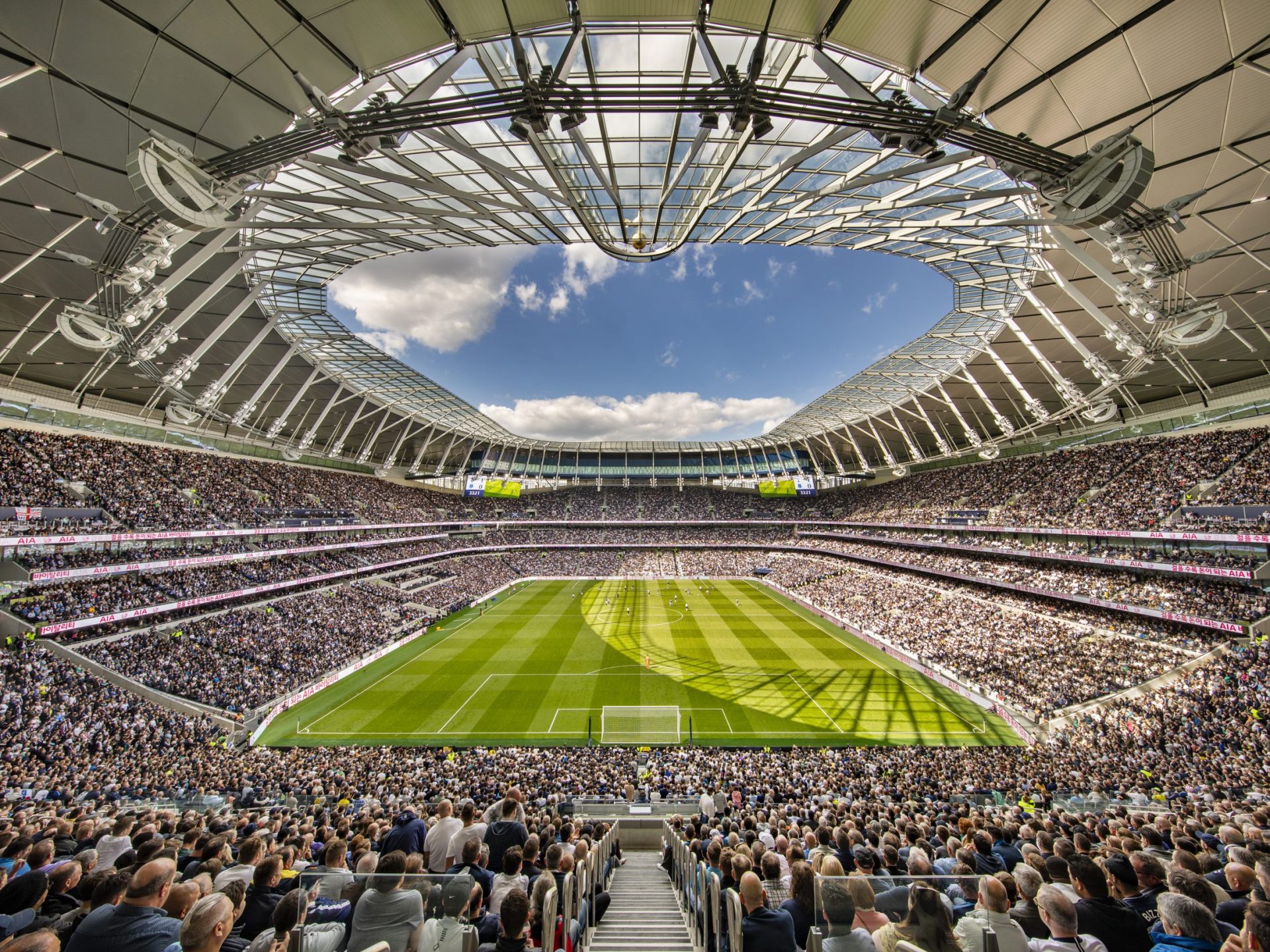
A recent project that exemplifies this approach is Tottenham Hotspur Stadium in London. Within the South Stand, the five-story Market Place atrium is a lively gathering place for fans before and after matches. It features street-food-style eateries, an on-site microbrewery, and the longest bar in Europe. But outside of the stadium itself is where the broader local community, regardless of their passion for sport or entertainment, sees most benefit. The wider stadium development scheme encompasses a new visitor centre called the Tottenham Experience, a gym, supermarket and a sixth-form school. Attracting around two million visitors a year, it buzzes with activity, thanks to stadium tours, retail spaces, conference and banquet facilities, cafes and F1 Drive, the first official Formula 1 karting experience, which features 180 metres of track beneath the South Stand.
Similarly, the Co-op Live site in Manchester, England has been designed so that it can host diverse events of different sizes throughout the week, and is within walking distance of Manchester City’s major stadium and training facilities. With the new arena regularly drawing foot traffic outside of matchdays, the entire precinct benefits. Manchester City has built its own museum on the campus, and a new hotel is under construction.
A highly activated precinct makes these commercial opportunities possible.
Tottenham Hotspur Stadium
Creating a “halo effect”
Prominent demographer Bernard Salt refers to the role of sport in Australian society as a “social glue” that brings people together. And we know that fans associate their favourite sporting memories with the places they are made. This “halo effect” encourages repeat visits to a stadium and its surrounding precinct. We see this on display at CommBank Stadium in Parramatta, where the design makes the most of Sydney’s climate, and encourages families to enjoy their time together.
The stadium precinct has also become a focus for community sport through the provision of basketball courts, exercise equipment and the field used for kids’ football holiday camps.
It’s a win-win: independent economic analysis conducted for the City Council shows that each time an event is held at the Stadium, the local area receives a boost of close to $1 million. The stadium opened in April 2019 and has hosted major sports events as well as artists such as Cold Chisel, the Hoodoo Gurus and Elton John.
"In addition to the 45 to 50 sports and concert events each year, CommBank Stadium averages 250 to 300 other events in the same period with up to 20,000 non-sport or concert guests through the doors annually, meaning that the venue is in use six out of seven days a week"
CommBank Stadium
Extending the live event experience
A sport or concert experience doesn’t start and stop with the ticket turnstile. It involves the public transport used to get to the venue, and how easy public and private transport facilities are to navigate. It is shaped by wayfinding such as signage, so that anticipation builds as spectators get closer to their seat. And it extends into dining experiences before and after the main event.
The world’s best sporting and entertainment precincts stand out because they have user experience embedded in their design DNA. They also maximise their contribution to the night-time economy in large cities, where a significant number of people work outside standard business hours.
For what is regarded as one of the world’s most commercially successful rectangular stadiums, Suncorp Stadium, in Brisbane, Australia, a key element of the design was the integration into the city, and particularly the Caxton Street dining precinct that surrounds the venue. Caxton Street becomes closed to traffic and for those attending the event, or even for those not attending, the pre- and post-event festivities are part of the experience.
"The precinct comes alive on event days with local bars and restaurants almost becoming an extension of the venue itself"
Precinct activation takes on new meaning at the Kai Tak Sports Park in Kowloon, Hong Kong. Built on the site of the former international airport, the vast 28-hectare precinct serves one of the most densely populated cities on Earth. From the nearby MTR station, visitors use a covered avenue to navigate through the Park, passing by shopping and dining options, health and wellbeing spaces, public sporting facilities, and landscaped gardens. A new 50,000-seat stadium hosts concerts and multiple sports, including the famous Hong Kong Sevens rugby tournament.
Learning from London 2012
The most successful Olympic host cities have used the opportunity to fast-track transformative development. A large industrial site in east London was selected for the centrepiece of the 2012 Games, with the London Stadium as the crown jewel. Known as Queen Elizabeth Olympic Park, the 2.5km square kilometre precinct required significant work to decontaminate the soil, bury overhead power lines, and clear the existing waterways, before construction could commence. Significant upgrades to public transport infrastructure, including high-speed trains, were crucial to activating the precinct before, during, and after the Olympics.
Today, Queen Elizabeth Olympic Park welcomes locals and visitors 365 days of the year to enjoy the extensive parklands, nearby Westfield shopping centre, and a growing hub of museums, theatres, and cultural institutions.
"The flexible planning approach adopted for London 2012, including the use of temporary stadia during the Games, has enabled the precinct to evolve and adapt to local needs. This has ensured the ongoing sustainable development of residential and commercial neighbourhoods, supporting the activation of the precinct and delivering greater social value to surrounding residents"
Community benefit is “The New Norm”
London’s ambitious and creative thinking proved prescient. In 2018, the International Olympic Committee re-imagined how a host city can effectively stage the Olympics and Paralympics with a model known as “The New Norm”. This approach prioritises the delivery of an event that is affordable, beneficial, and sustainable. Major infrastructure created for an Olympic and Paralympic Games, or for any major sporting event, needs to provide a long-term return on investment to the communities they serve.
With Brisbane 2032 on the horizon, we have an exceptional opportunity to look well beyond the Games itself, and design user-centred and highly activated spaces that will continue to deliver for communities over the next 50 years.
Lorem ipsum dolor sit amet consectetur, adipisicing elit. Non facere corporis et expedita sit nam amet aut necessitatibus at dolore enim quis impedit eius libero, harum tempore laboriosam dolor cumque.
Lorem, ipsum dolor sit amet consectetur adipisicing elit. Illo temporibus vero veritatis eveniet, placeat dolorem sunt at provident tenetur omnis, dicta exercitationem. Expedita quod aspernatur molestias eum? Totam, incidunt quos.



